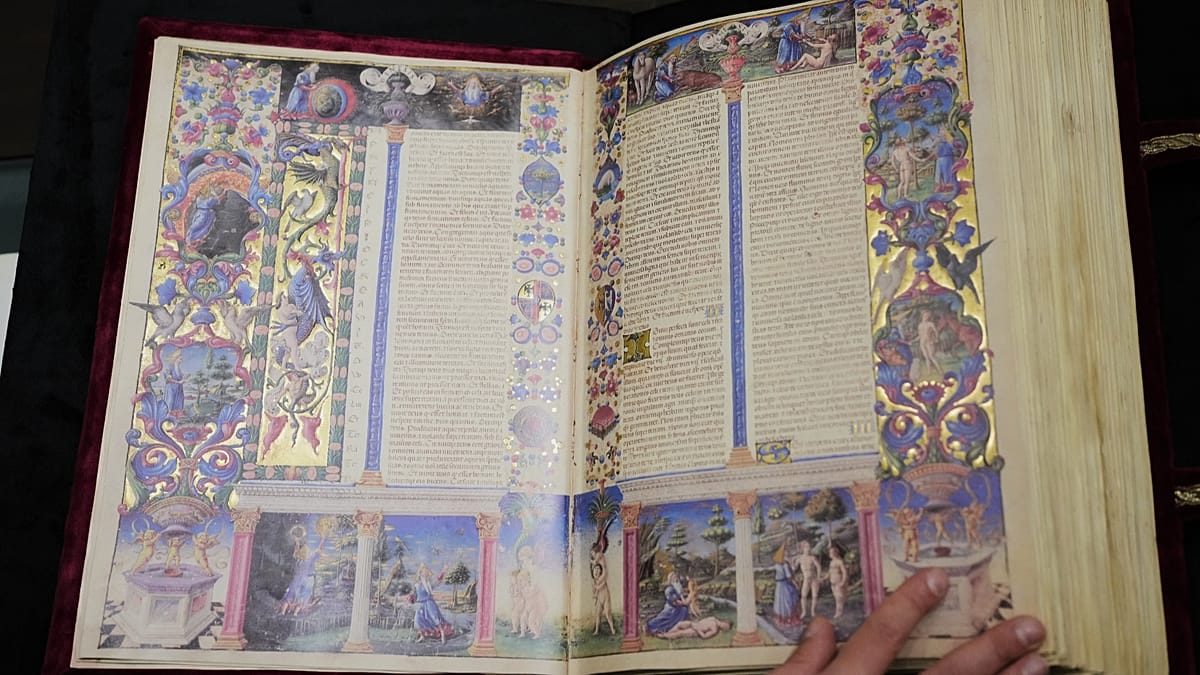A 15th-century Bible illustrated with gold and Afghan lapis lazuli has been unveiled in Rome, as part of the Vatican’s Holy Year celebrations.
Typically stowed away in Modena, the two-volume manuscript is considered one of the most spectacular examples of Renaissance illuminated manuscripts and said to be one of the most expensive books of its time.
The Bible, commissioned by Duke Borso D’Este, was created between 1455 and 1461 by calligrapher Pietro Paolo Marone and illustrators Taddeo Crivelli and Franco dei Russi.
The manuscript followed the Este family from Ferrara to Modena, where it remained until the family lost control of the city in 1859 and the last duke fled to Vienna. The Bible stayed among noble European families until Austria’s last empress sold it to a Parisian antique collector in 1922.
Italian industrialist Giovanni Treccani donated the Bible to the Italian state after purchasing it in 1923 for 3.3m French francs.
Alessandra Necci, director of Gallerie Estense in Modena, where the Bible is usually kept, describes it as the “Mona Lisa of illuminated manuscripts” because of its exquisite artistry and religious inspiration.
The Italian Culture Ministry considers it one of the highest expressions of miniature art “that unites sacred value, historic relevance, precious materials and refined aesthetics.”
It was transported to Rome under heavy security and its arrival in the Italian Senate was televised.
It will remain behind humidity-controlled plate glass during its Roman sojourn, but visitors can “read” it digitally via touch screen displays featuring ultra-high-resolution images.
The ‘Mona Lisa Bible’ is on display in the Italian Senate until 16 January.
Additional sources • AP

